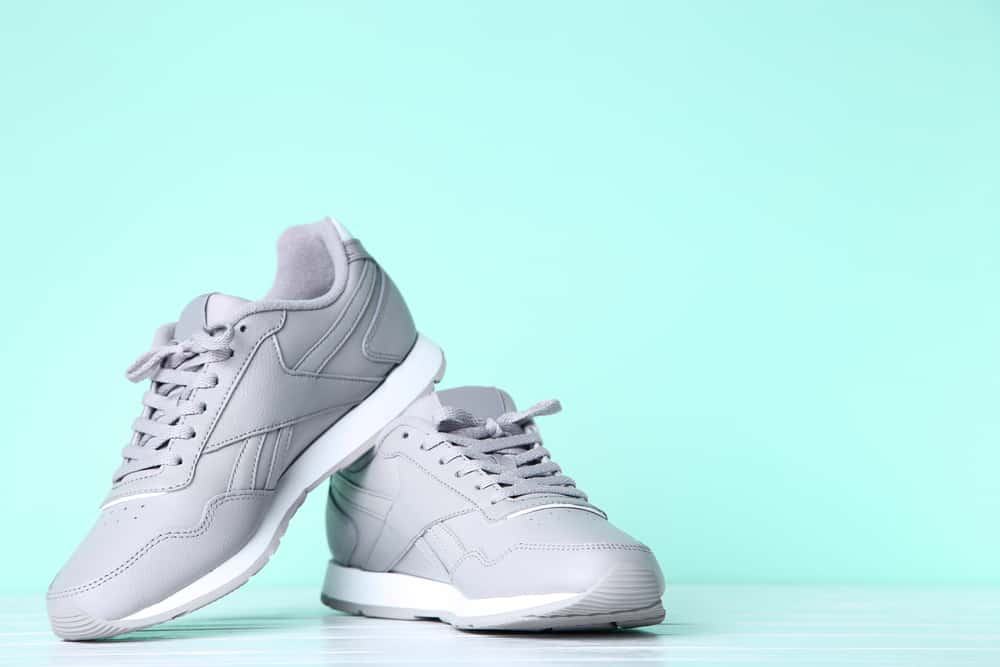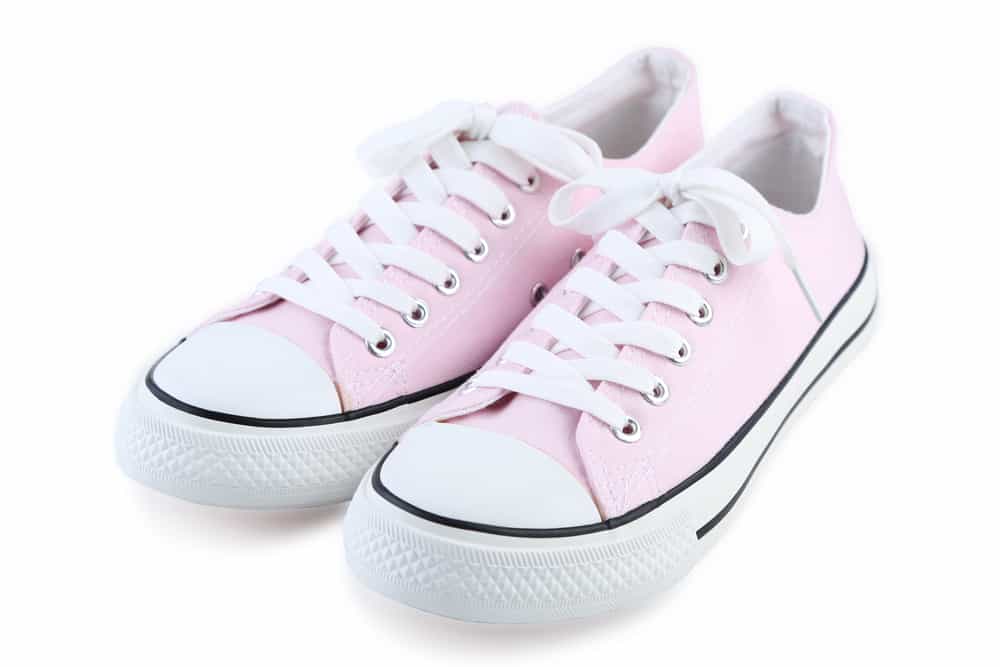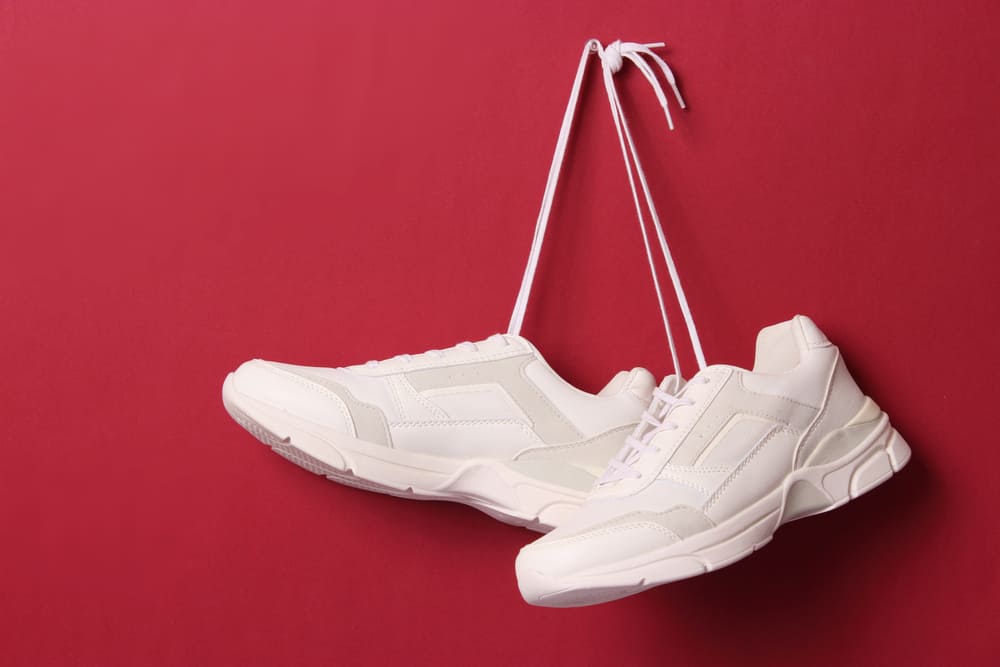Athletic shoes come in a seemingly endless range of types and styles. This can make choosing an appropriate pair for your physical and active needs a very confusing task.
One of the comparisons we’re often asked about is sneakers vs running shoes. Are they really that different? Can you use one instead of the other? This article answers these and a lot more.
Today, we’re helping you understand the difference between sneakers and running shoes. Let’s get started!
What Are Sneakers?
A lot of people often wonder “what is considered a sneaker?”, so let’s get that out of the way before we dive into the difference between sneakers and running shoes.
Sneakers are generally soft shoes. The original purpose of this type of footwear is to be worn for athletic and physical activities.
But with time, the comfort and support provided by sneakers along with their laid-back appearance shifted their use to casual settings and everyday life.
Also referred to as trainers, sneakers nowadays come in an extensive variety of styles and designs with widely varying levels of padding, cushioning, and support depending on what you want to use them for.
While all sneakers are built to provide comfort, stability, and support, different designs are better suited than others for walking, occasional jogging, exercising, playing sports such as volleyball, and doing outdoor activities such as hiking.
Some sneakers feature rubberized soles to improve traction and prevent slipping on polished or sandy surfaces, while others feature additional cushioning for absorbing impact against hard surfaces like pavement and concrete.
What Are Running Shoes?
Running shoes are a type of footwear designed specifically to meet the physical needs of runners when it comes to foot/leg support, cushioning, stability, and comfort.
They’re manufactured to be lightweight and shock-absorbent to eliminate any maneuvering issues and reduce the risk of sustaining injuries while running.

Sneakers vs Running Shoes
Now that you better understand what sneakers and running shoes are, let’s take a closer look at the differences between them and the aspects that make each type of footwear unique.
Performance
One of the most notable differences between sneakers vs running shoes is the performance they allow you to produce.
Sneakers are built for casual use and low-impact athletics where you’d move side to side.
This includes events like walking, occasional jogging, gym exercises, playing sports such as badminton and tennis, and outdoor activities such as hiking.
On the other hand, running shoes are specifically made to provide the support, cushioning, and comfort required for running.
Their design helps runners move forward with greater momentum while absorbing shocks to prevent injuries.
Flexibility
Flexibility is an important aspect in designing sneakers and running shoes as it factors in the level of comfort and support that each type of footwear offers.
On one hand, sneakers typically have their flex positioned between the heel and midfoot sections. This is to accommodate the different movements required for various activities such as moving side to side and going back and forth.
On the other hand, running shoes bend only at the arch section. This is to accommodate the fact that runners hit the ground with their toes first.
Cushioning
No matter the activity you’re doing, your shoes should provide enough cushioning to provide protection and keep you comfortable for as long as possible. The level of cushioning required depends on how high-impact the activity you’re doing is.
Casual outings, walking, jogging, outdoor activities, and gym exercises are all examples of low-impact activities where you hit the ground with a maximum weight of 1.5 times your body weight. As such, sneakers can be suitable in these scenarios because they feature less cushioning.
On the other hand, running is a high-impact activity that causes you to hit the ground with a maximum weight of 3 times your body weight. In this case, your forefoot and heels take the greater stress, so running shoes are more appropriate as they feature more padding and plenty of cushioning to absorb such shocks.
Heel Height
The heel height is different in sneakers compared to running shoes since they address different activity requirements.
In sneakers, heels are designed to be nearly flat because users don’t need special support for certain parts of their feet.
In everyday use and low-impact activities, your entire foot hits the ground at the same time, so the pressure is mostly distributed evenly. As such, there’s no point in raising the heel height.
On the other hand, running causes you to hit the ground with your toes first then all the weight shifts to your heel to give you the momentum needed for moving forward.
This sequence means you need ample flexibility and cushioning in the arch, as well as extra height in the heel to give the extra push required for the next step.
Breaking In
Breaking sneakers in doesn’t require any special measures. The whole process should be over within a couple of days and with minimal risks.
However, running shoes are a different story.
If you’re trying to break in new running shoes but they’re the same model as an old pair you already own and have been using, then the new shoes will likely require a break-in period no longer 3 or 4 days of everyday runs or 3 to 4 runs over several days.
This is because your feet will already be accustomed to the shoes’ design, including the level of cushioning, support, and stability they offer.
As such, your running posture, stride, and gait shouldn’t differ that much when you run in the new shoes of a model you’re used to.
That said, keep the following points in mind:
- Your first run with your new but familiar running shoes should be of moderate mileage to make up for any tweaks that may have occurred in the new version of the same model compared to the last one.
- Be on the lookout for any changes in the feel of the shoes while you run as the new shoes may include some upgrades even if they’re sold under the same model. From there, you’ll be able to make adjustments (such as wearing thinner or thicker running socks) if needed.
But what if you bought new running shoes in a different model than you’re used to?
In this case, breaking your new running shoes will take the usual period of around 2 to 3 weeks. The frequency of running in the new shoes can shorten or prolong the process.
That said, your first couple of runs in your new running shoes should also be of low to moderate mileage to avoid injuries resulting from the unfamiliar design.

Can You Use Sneakers for Running?
Running in sneakers isn’t a good idea, especially if you’re running long distances.
The materials used in manufacturing sneakers usually result in them being heavier than dedicated running shoes. This is mainly due to depending on tougher fabrics in making the upper of sneakers to give you more support when moving sideways.
Not to mention, the midsole portion of sneakers typically provides weaker cushioning that can’t withstand the repeated pressure and impact of running.
As such, we recommend you save your sneakers for the gym or everyday use. Of course, you can run in sneakers if there’s something wrong with your running shoes and you don’t have a spare pair on hand.
Can You Wear Running Shoes for Everyday Use?
You can wear running shoes every day for casual outings or going on walks, but only if you don’t use the same pair for running as well. Otherwise, you can bet your running shoes will have a much shorter lifespan than recommended.
If you’re a regular runner, your running shoes are already under serious stress from repeated impact. Adding the wear and tear of everyday use to the mixture will significantly reduce the shoes’ durability.
Since every shoe has a limit when it comes to longevity, your running shoes won’t last very long if you use them for both purposes.
However, if you use one pair of running shoes for everyday outings and a different pair for running, or if you have multiple pairs and you use them in rotation, there shouldn’t be much of an issue with their longevity.
Wrap Up
There you have it, a complete guide on the difference between sneakers and running shoes. As you can tell by now, each of them offers unique advantages to the user, so it’s up to you to decide which will suit your needs best.

